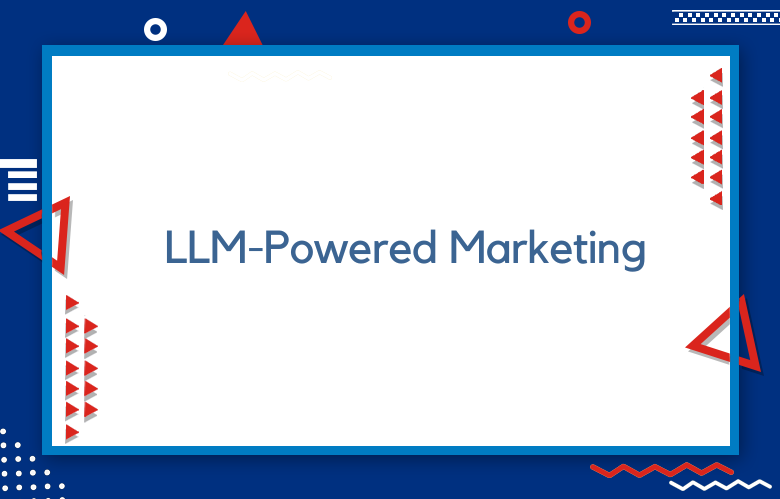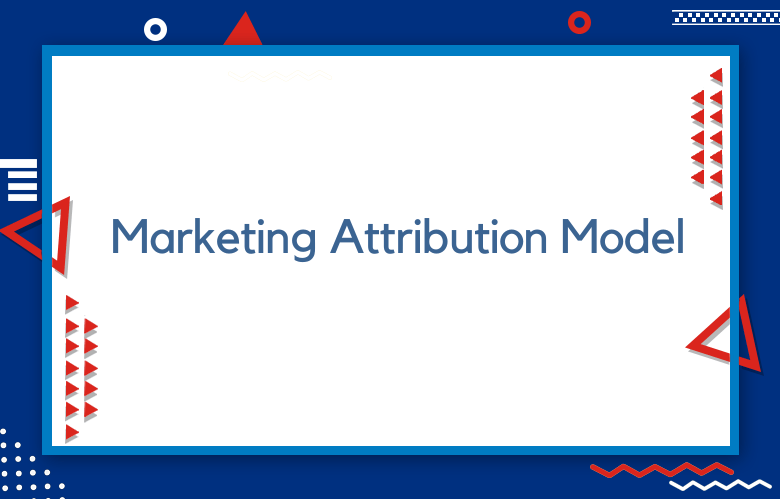LLM-Powered Marketing: Harnessing LLM Mesh for Apps

LLM-powered marketing is changing the game. Businesses are tapping into advanced language models to boost their strategies. This tech helps create personalized content, improve customer engagement, and analyze data quickly. Imagine crafting messages that speak directly to your audience’s needs.
With LLMs, marketers can automate tasks and gain insights that were once hard to reach. The benefits are enormous—better targeting, increased efficiency, and a stronger brand connection. Dive into how LLM-powered marketing can elevate your business and keep you ahead. Discover the tools and tricks that can transform your marketing efforts today.
Key Takeaways
- Explore how LLM (Large Language Models) can enhance your marketing efforts by improving content creation and audience engagement.
- Utilize LLM tools to boost your SEO content, as they can generate relevant keywords and optimize your writing for search engines.
- Focus on key features such as natural language understanding and adaptability to maximize the effectiveness of LLM tools in your campaigns.
- Address challenges in LLM integration by investing time in training and adapting these tools to fit your marketing needs.
- Implement LLM in your marketing strategy by starting small, testing different approaches, and scaling what works best for your audience.
- Follow best practices for LLM optimization, including regular updates and feedback loops, to ensure your content remains fresh and relevant.
Understanding LLM in Marketing
What is LLM?
LLM stands for Large Language Models. These are advanced AI systems designed to understand and generate human-like text. Marketers use LLMs to create more effective strategies. By leveraging these models, brands can tailor their messages to resonate with specific audiences.
LLMs have transformed marketing by offering insights that were previously hard to obtain. They can process information quickly and provide valuable data on consumer trends. This capability allows marketers to adapt their strategies in real-time.
Analyzing Consumer Behavior
LLMs play a crucial role in analyzing consumer behavior. They examine data from social media, reviews, and surveys. This analysis helps identify what consumers like or dislike. By understanding preferences, marketers can enhance targeting efforts.
For example, if a brand notices consumers favor eco-friendly products, it can adjust its messaging accordingly. The model can suggest keywords and phrases that appeal to this audience, making campaigns more relevant and engaging.
Natural Language Processing Impact
Natural Language Processing (NLP) is a critical component of LLMs. This technology improves customer interactions significantly.
With NLP, chatbots can have meaningful conversations with customers. They can answer questions, resolve issues, and provide product recommendations, improving customer satisfaction and loyalty.
Moreover, NLP effectively analyzes customer feedback. Brands gain insights into how their products are perceived and can make informed decisions based on this feedback.
Benefits of LLM in Marketing
- Enhanced Targeting: Marketers reach the right audience with tailored messages.
- Improved Efficiency: Campaigns can be adjusted quickly based on real-time data.
- Better Customer Engagement: Personalized interactions lead to higher satisfaction rates.
These benefits highlight the importance of integrating LLMs into marketing strategies.
Benefits of LLM for SEO Content
Quick Content Creation
LLMs can generate high-quality content in a short time. Businesses often need fresh articles, blog posts, and product descriptions. LLMs help meet this demand quickly. They can create engaging text without sacrificing quality. This speed allows marketers to keep their websites updated regularly.
Moreover, LLMs adapt to various writing styles. Depending on the audience, they can write in a professional or casual tone. This flexibility helps brands connect better with their target market.
Enhanced Keyword Optimization
Keyword optimization is vital for SEO success. LLMs analyze large amounts of data to identify trending keywords. They provide insights into what users search for online, which helps marketers choose the right keywords for their content.
Using these data-driven insights, businesses can improve their search engine rankings. Higher rankings lead to increased visibility, which means more traffic to websites. This cycle continues as more visitors engage with the content.
Improved User Engagement
User engagement is crucial for keeping visitors on a website. LLMs create content that resonates with readers. By understanding user intent, they produce relevant articles that answer questions and solve problems.
When users find valuable information, they stay on the site longer. More extended visits significantly reduce bounce rates.
LLMs can personalize content based on user preferences. For example, they might suggest related articles or products based on previous visits. This personalization enhances the overall user experience.
Cost-Effective Solutions
LLMs also offer cost savings for businesses. Hiring writers can be expensive, especially for large volumes of content. With LLMs, companies can produce more at a lower cost.
Furthermore, LLMs reduce the time spent on revisions. They generate accurate and coherent text from the start. This means less back-and-forth between writers and editors.
Continuous Learning
LLMs continuously improve through machine learning. They learn from user interactions and feedback over time. This ability makes them even more effective at creating relevant content.
As algorithms evolve, so do the results produced by LLMs. Marketers benefit from staying ahead of trends in SEO and content marketing.
Key Features of LLM Tools
Sentiment Analysis
LLM tools can analyze customer feelings, which helps businesses better understand their audience. For example, a company can use sentiment analysis to gauge reactions to a product launch. LLMs identify positive or negative sentiments by examining social media posts and reviews. This information lets marketers adjust their strategies based on honest feedback.
Companies that use sentiment analysis can respond quickly to customer needs. If feedback is mostly negative, they may need to improve their product or service. Positive feedback can reinforce successful strategies. Thus, LLMs provide valuable insights into market trends.
Content Automation
Automation is another key feature of LLM tools. These tools streamline content creation and curation processes. Businesses can quickly generate articles, blog posts, and social media updates, saving time and resources.
For instance, an e-commerce site may need regular product descriptions. An LLM can create these descriptions based on provided data, ensuring consistency in tone and style across all content. Moreover, LLMs can curate existing content by selecting the most relevant articles for sharing. This keeps audiences engaged without requiring constant manual effort.
Automated content creation also allows marketers to focus on strategy rather than writing. They can spend more time analyzing data and planning campaigns, which makes businesses more efficient and effective in reaching their goals.
Integration with Platforms
Integration is crucial for seamless marketing workflows. LLM tools often connect with existing platforms like CRM systems or email marketing services, simplifying customer interaction management.
For example, an LLM integrated with a CRM can personalize emails based on customer behavior. It analyzes past purchases and browsing history to suggest products tailored to individual preferences. This level of personalization increases engagement rates significantly.
Integrating LLMs with analytics tools provides deeper insights into campaign performance. This data lets marketers track how well their content performs across different channels and adjust real-time strategies.
The combination of these features makes LLM tools powerful marketing assets. They enhance understanding of customer sentiments, automate tedious tasks, and integrate smoothly with other platforms.
Overcoming Challenges in LLM Integration
Training Needs
Marketing teams must understand LLM technology and learn to interpret the data and insights LLMs generate. This knowledge helps them make informed decisions. Workshops and online courses can provide valuable learning resources.
Data Privacy
Data privacy is crucial when using LLMs. Marketing teams often handle sensitive customer information and must protect this data. Organizations should comply with regulations like GDPR and CCPA. These laws set strict guidelines on data usage and privacy, and failing to adhere can lead to severe penalties. Ethical considerations also play a role. Teams must avoid bias in their models and respect user consent.
Cost Management
Initial costs for integrating LLMs can be high, so businesses must allocate resources wisely. One strategy is to start small. This approach allows teams to assess performance without overspending. Gradually expanding the use of LLMs can help manage expenses.
Another option is to leverage cloud-based solutions. These services often have lower upfront costs compared to on-premises systems. They allow businesses to pay only for what they use, reducing financial risk.
Resource Allocation
Proper resource allocation is vital for successful integration. Teams should identify critical areas where LLMs can add value. Focus on tasks that require heavy data analysis or content generation. Assign dedicated personnel to oversee LLM projects. This ensures accountability and progress tracking.
Regular assessments of the integration process are essential. Teams should frequently evaluate the effectiveness of LLM applications. Based on feedback and results, adjustments may be necessary.
Collaboration
Collaboration between departments enhances the success of LLM integration. Marketing, IT, and legal teams must work together closely. They should share insights and expertise throughout the implementation process. Clear communication helps address challenges quickly.
Establishing cross-functional teams can foster innovation. Diverse perspectives lead to creative solutions for overcoming obstacles.
Implementing LLM in Marketing Strategy
Assessing Needs
The first step is to assess current marketing needs. Companies should review their existing strategies and identify gaps where LLM can add value. This includes understanding customer engagement and content creation.
Gather data from past campaigns. Analyze what worked and what didn’t. Use surveys or feedback forms to understand customer preferences. This information helps determine if LLM tools fit into the marketing plan.
Setting Goals
Clear goals are essential for success. Establish specific objectives for using LLM in marketing. These could include increasing customer engagement or improving response times.
Set key performance indicators (KPIs) to measure effectiveness. Examples of KPIs include conversion rates and customer satisfaction scores. Regularly track these metrics to see if LLM meets expectations. Adjust strategies based on performance data.
Collaboration Between Teams
A collaborative environment boosts integration success. Marketing and tech teams must work together closely. Each team brings unique insights that enhance LLM implementation.
Encourage open communication to share ideas and solutions. This teamwork fosters innovation and problem-solving.
Training is also essential. Provide opportunities for both teams to learn about LLM capabilities. Understanding the technology helps marketers use it effectively.
Continuous Evaluation
Continuous evaluation ensures ongoing improvement. Regularly assess how LLM impacts marketing efforts and gather data on customer interactions and campaign performance.
Use this information to refine strategies over time. Adapt the approach as needed based on results and feedback. Stay updated on new developments in LLM technology.
Case Studies
Successful case studies illustrate effective LLM implementation. For example, a retail company used LLM to personalize email marketing campaigns. Within three months, they saw a 30% increase in open rates.
Another example is a tech firm that integrated LLM for customer support chatbots. They reduced response times by 50%, enhancing customer satisfaction significantly.
These examples show how LLM can transform marketing strategies when implemented correctly.
Best Practices for LLM Optimization
Regular Updates
Regular updates are essential for optimizing LLMs. The marketing world is constantly changing. Trends shift quickly, and customer preferences evolve. Keeping LLMs updated ensures they reflect current market conditions.
Training LLMs with fresh data helps them stay relevant. For instance, a company might update its model monthly. This practice allows the model to learn from recent campaigns and audience interactions and helps it understand new keywords or phrases that customers use.
Continuous Monitoring
Continuous monitoring of LLM-generated content is crucial. Businesses should track how well their content performs. Metrics like engagement rates and conversion rates provide valuable insights.
For example, adjustments may be needed if an email campaign using LLM content shows low open rates. Regularly reviewing performance data allows marketers to make informed decisions.
Feedback Loops
Gathering feedback from users can significantly improve results. Audience reactions provide clues about what resonates and what falls flat.
For instance, companies can use surveys or social media comments to gather insights. This information can guide adjustments in the content creation process. Incorporating audience feedback creates a more tailored experience for users.
Training Techniques
Training techniques are essential for effective LLM optimization. Marketers should consider various approaches when training their models. Fine-tuning the model on specific datasets can enhance its accuracy.
Using diverse datasets helps the model better understand different contexts. For example, training in both formal and informal language can improve versatility. This approach makes the LLM more adept at generating appropriate responses.
Collaboration with Experts
Collaboration with experts is another best practice. Working with data scientists or AI specialists can lead to better outcomes. These experts can provide insights on optimizing training processes and monitoring performance effectively.
They can also help in setting up proper evaluation metrics. Understanding which metrics matter most ensures that marketers focus on what drives success.
User-Centric Approach
A user-centric approach enhances the effectiveness of LLMs in marketing. Marketers must focus on creating messages that resonate with their customers’ needs.
Utilizing customer personas can guide this process. By knowing who the audience is, marketers can tailor LLM outputs accordingly.
Future of LLM in Marketing
Personalization Advances
LLM technology will likely transform how brands connect with customers. Future advancements will enhance personalization in marketing efforts. This analysis allows for tailored messages that resonate with individual preferences.
For example, LLMs might predict what products customers want based on their browsing history. They can adjust marketing strategies in real time, which means brands can send personalized offers right when customers are most likely to buy.
AI-Driven Insights
The reliance on AI-driven insights will grow significantly. Companies will use these insights for strategic decision-making. LLMs can process data faster and more accurately than humans. This capability leads to a better understanding of market trends.
Marketers will use AI to identify emerging patterns in consumer behavior. Based on these findings, they can adjust campaigns quickly. For instance, if a new trend appears, companies can pivot their marketing strategies to take advantage of it.
Immersive Experiences
LLMs have the potential to create immersive customer experiences. Enhanced interactivity will be a crucial feature in future marketing. Brands may use chatbots powered by LLMs to engage customers in real time.
These chatbots can answer questions, provide recommendations, and even assist in purchasing. Imagine interacting with a virtual assistant that understands your needs perfectly. This level of engagement keeps customers interested and satisfied.
LLMs could help design interactive content like quizzes or games. These tools draw customers into the brand’s story while providing valuable insights about their preferences.
Ethical Considerations
As LLM technology advances, ethical considerations must also be addressed. Transparency is crucial in maintaining customer trust. Companies should communicate how they use data collected from users. This approach builds confidence in the brand and encourages ongoing engagement.
Closing Thoughts
LLM-powered marketing is transforming how you connect with your audience. By understanding its benefits, features, and best practices, you can effectively integrate these tools into your strategy. Embrace the future of marketing with LLM technology to enhance your SEO content and overcome challenges seamlessly.
Now’s the time to take action. Start exploring LLM tools that fit your needs and elevate your marketing game. The future is bright for those ready to adapt and innovate. Don’t get left behind—leverage LLM to boost your brand’s visibility and engagement today!
Frequently Asked Questions
What is LLM in marketing?
LLM stands for Large Language Model. It’s an AI technology that analyzes and generates human-like text, enhancing marketing strategies through personalized content creation and customer engagement.
How can LLM improve SEO content?
LLM optimizes SEO by generating keyword-rich content, improving readability, and ensuring relevance. This leads to higher search rankings and improved organic traffic.
What are the critical features of LLM tools?
Key features include natural language generation, sentiment analysis, content optimization, and real-time data processing, which enhance the efficiency and effectiveness of marketing campaigns.
What challenges might I face when integrating LLM?
Challenges include data privacy concerns, the need for quality training data, and potential bias in generated content.
How do I implement LLM in my marketing strategy?
Start by identifying specific use cases like content generation or customer support. Then, select appropriate LLM tools and train your team to use them effectively.
What are the best practices for optimizing LLM usage?
Best practices include monitoring continuous outputs, updating training data regularly, and maintaining human oversight to ensure the quality and relevance of generated content.
What does the future hold for LLM in marketing?
Expect more personalized experiences, enhanced analytics, and deeper customer insights driving marketing strategies.



